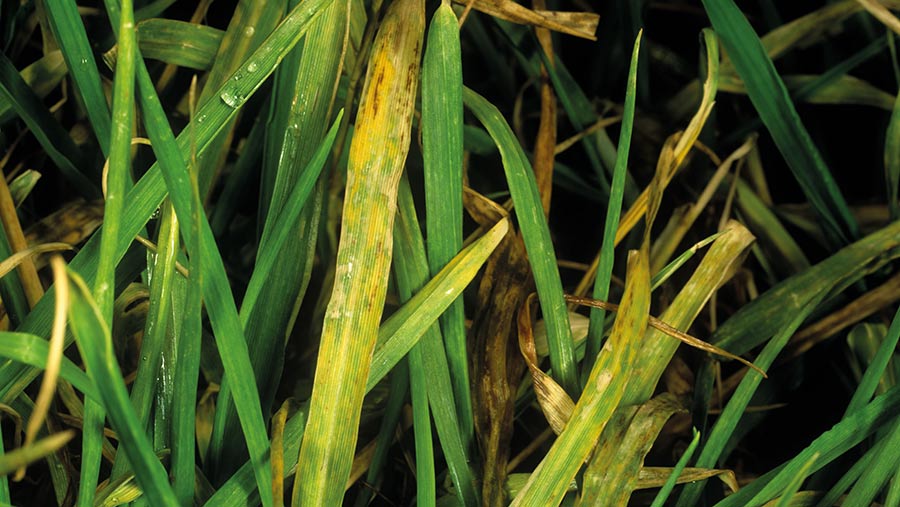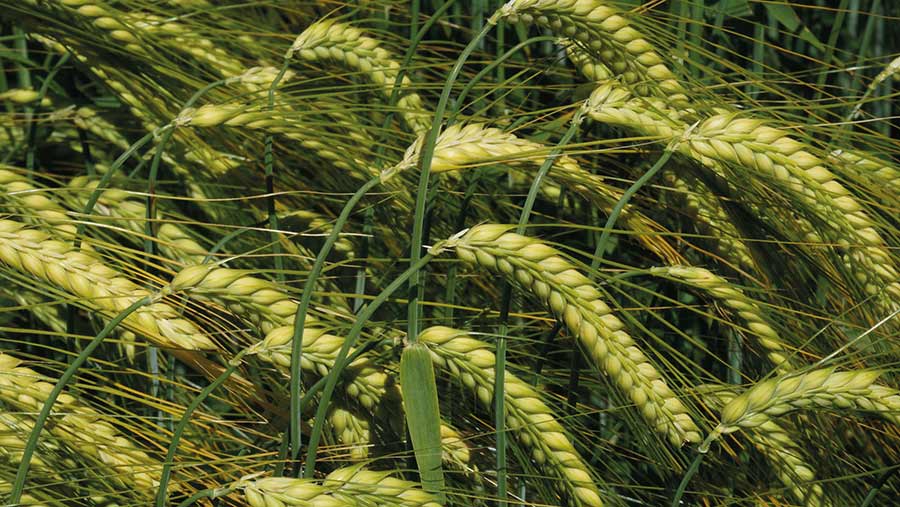New barley virus strain puts resistant varieties at risk
 © Nigel Cattlin/Alamy Stock Photo
© Nigel Cattlin/Alamy Stock Photo Winter barley varieties showing symptoms of soil-borne barley yellow mosaic virus (BaYMV), despite being classed as resistant on the AHDB Recommended List, are being infected by a different strain of the virus, experts believe.
Following reports of infection in the field, independent testing of samples has confirmed that BaYMV is the cause of the symptoms in affected crops, and work is continuing to identify which virus strain or strains are responsible.
See also: Harvest 2022: The 5 top-yielding winter barley varieties map
Barley yellow mosaic virus
Barley yellow mosaic virus can persist in the soil for many years and affects winter-sown varieties.
Once plants are infected, there is no control method available. Symptoms show in early spring, following a cold spell, and infection occurs in distinct patches. These patches increase in size in successive years.
High-risk factors include previous infection, movement of infected soil and growing a susceptible variety.
Niab cereals variety specialist Clare Leaman says, up until this year, strain 1 of BaYMV has been dominant in the UK, so the RYM4 resistance found in the current winter barley line-up has been effective.
“We suspect, but we can’t be certain yet, that strain 2 of the virus may be responsible for what we are seeing this year,” she says.
“If that’s the case, the most likely scenario is that it has spread from the South West, where it was first identified.”
There is a genetic solution to that strain, RYM5 resistance, but it is only present in a couple of winter barley varieties sold in the UK and the Recommended List rating given to barley varieties does not differentiate between the types of resistance.
“We don’t have the genetic resistance to strain 2 in most of our commercially available varieties, although it is reassuring to know that it exists,” she notes.
“Currently, the only winter barley varieties known to have both the RYM4 and the RYM5 resistance are Valerie and Sensation.”
While Valerie – a two-row feed variety from Senova – is on the Recommended List, the six-row variety Sensation from DSV is not.
Both companies have confirmed the presence of RYM4 and RYM5 in their varieties and the virus protection they appear to provide.

Valerie winter barley © Syngenta
However, Clare cautions that there are also other strains of BaYMV out there, of which far less is known about.
“There could be other strains responsible for infection – we just don’t know that yet. Strain identification is the missing link at the moment.”
Soil-borne viruses are complicated, she stresses, which is why good soil hygiene is important.
“We are certainly seeing more virus generally this year – both in wheat and barley – which may be partly due to the weather.”
Varieties with both RYM4 and RYM5 resistance could be the solution for continuous barley situations or where soils are known to be infected, she notes, but more knowledge on other virus strains is also required.
Agronomist’s view
Independent agronomist and Farmers Weekly Crop Watch contributor Stephen Harrison is in no doubt that there is a different strain of BaYMV around, having seen issues in varieties that were supposed to be resistant.
Samples sent to Fera confirmed that they were infected with BaYMV, showing that the strain is able to overcome RYM4 resistance.
“We’d been scratching our heads over what has happening,” he says. “Getting the test results back confirmed our suspicions and meant that we’ve had to find other ways of coping with this strain.”
Those include moving less soil, growing a variety with both RYM4 and RYM5 resistance and being alert to virus symptoms, he continues.
“I’m convinced that these soil-borne viruses are often mis-identified,” he says.
“There’s a tendency to attribute the symptoms to micronutrient deficiencies or pH problems, rather than consider viruses.”
Cereals event 2023
- Niab Tag plus a number of barley breeders including Senova and DSV are exhibiting at the Cereals event.
- New for 2023 is the Winter Wheat and Barley Feature, with daily demonstrations led by Ceres Rural Agronomists at 10am and 2pm. The expanded feature gives growers the opportunity to see the key varieties in one place for a side-by-side comparison.
